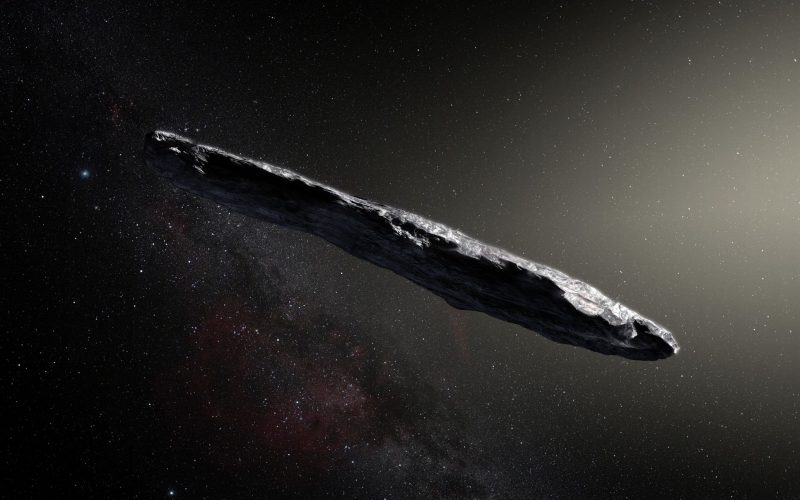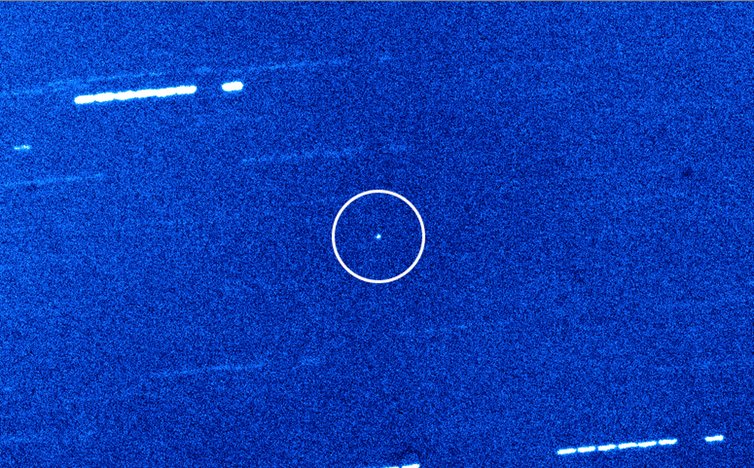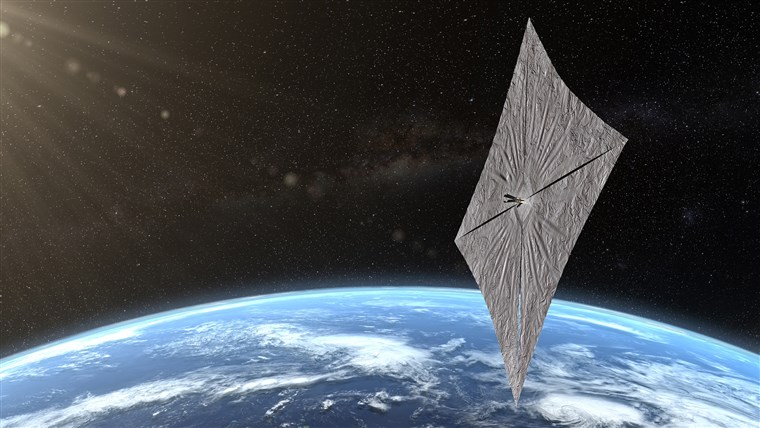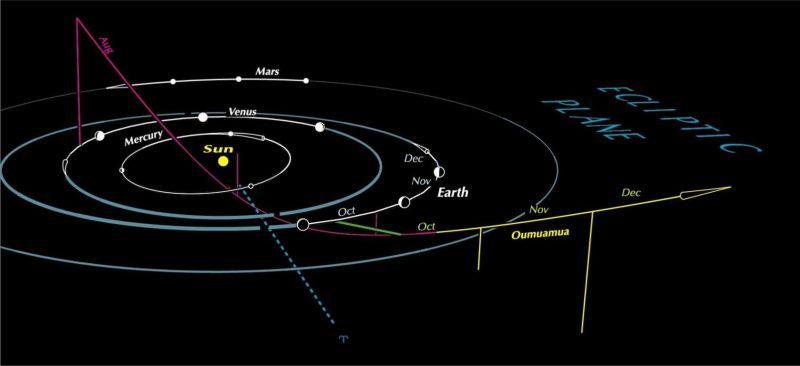
When astronomers first spied ‘Oumuamua – in the fall of 2017 – they weren’t sure if it was one of our solar system’s asteroids or comets, or something else. It turned out to be an interstellar interloper, the first-known interstellar object. The astronomers watched it speed through the solar system, disappearing from the view of even the largest earthly telescopes around January 2018 … as theories about its odd shape and behavior raged. Some said it was an unusually long asteroid. Others even proposed an extraterrestrial spacecraft, reminiscent of the one in Arthur C. Clarke’s famous sci-fi novel “Rendezvous with Rama.” The astronomers eventually settled on its being either an asteroid or comet from another solar system, albeit a weird one.
Now there’s a new idea. ‘Oumuamua might not be an interstellar asteroid or comet, but instead something never seen before: neither ice nor rock, but rather a very lightweight and “fluffy” conglomerate of dust and ice grains, sort of like a “cosmic dust bunny.” The new peer-reviewed research was published in The Astrophysical Journal Letters on November 11, 2019.
Popular Science published an article on this study on November 15. As explained by Charlie Wood at PopSci, the new study suggests ‘Oumuamua might be so porous that sunbeams could actually push it and give it its observed momentum.
When astronomers first spotted ‘Oumuamua, it was already on its way out of the solar system. There was limited time to observe it. But astronomers did notice something odd: the object was increasing slightly in speed. Comets could do that, as they lost ice and dust particles behind them in their tails. But ‘Oumuamua didn’t have a tail.
EarthSky 2020 lunar calendars are available! They make great gifts. Order now. Going fast!

What else could cause ‘Oumuamua to increase in speed? As Wood’s article in PopSci explained:
One provocative paper suggested that pressure from sunlight itself was pushing the object away, as light particles have billiard ball-like momentum. But considering ‘Oumuamua’s assumed heft as an asteroid, it would need a giant flat surface to catch enough of the sun’s rays to get any kind of boost from the barrage of light particles.
This idea, though, led to an even wilder possibility. Perhaps ‘Oumuamua was artificial, something like a large flat light sail.
It was Amaya Moro-Martín – an astronomer at the Space Telescope Science Institute – who proposed ‘Oumuamua might be “fluffy.” It might be a lightweight conglomerate of dust and ice grains, known as a fractal aggregate: in essence, a dust fractal or “cosmic dust bunny.” The porous patterns in it would be repeated across different size scales, like a fractal. As co-author Eirik Flekkøy, a physicist at the University of Oslo, told PopSci:
It’s a completely new thing. I think if you hit this thing it would be a little bit like hitting a spider web.
The PopSci article explained:
Intrigued by Moro-Martín’s suggestion, Flekkøy and his colleagues set out to check whether the fractal aggregate hypothesis held up. They noticed that an observed slowing of ‘Oumuamua’s rotation supported the theory, because the speed of the slowing fit with a phenomenon where light can push harder on some parts of a surface – such as shinier parts – than it pushes on others. When the object cools after being heated up by the sun, the departure of heat exerts gentle pushes too. All these uneven nudges can add up to make a lumpy object spin faster or slower over time.
So if sunbeams could turn ‘Oumuamua, the researchers reasoned, perhaps they could speed it up too
This could explain the object’s slowing rotation and increase in speed, but would such a lightweight structure hold together? PopSci quoted Flekkøy as saying:
If this is such a filamentary, porous, fractal structure, would it survive? And the answer is fairly safely, yes.


Bottom line: ‘Oumuamua – the weird object that entered our solar system a few years ago – may not be an asteroid or comet at all, but rather a “cosmic dust bunny.”
Source: The Interstellar Object ‘Oumuamua as a Fractal Dust Aggregate











